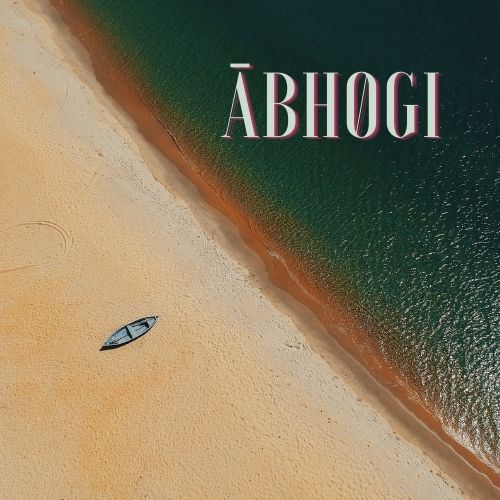
Abhogi (Ābhōgi) is a raga in Carnatic music and has been adapted to Hindustani music. It is a pentatonic scale, an audava raga.It is a derived scale (janya raga), as it does not have all the seven swaras (musical notes). Ābhōgi has been borrowed from Carnatic music into Hindustani music and is also quite popular in the latter.
Ābhōgi is considered a janya raga of Kharaharapriya, the 22nd Melakarta raga, though it can be derived from Gourimanohari too, by dropping both panchamam and nishadam.
| Origin: |
Graha bhedam is the step taken in keeping the relative note frequencies same, while shifting the shadjam to the next note in the rāgam. Abhogi’s notes, when shifted using Graha bhedam, yields another pentatonic rāgam, Valaji. For more details and illustration of this concept refer Graha bhedam on Ābhōgi.
Details about the raaga: Abhogi
Abhogi is a symmetric raga and has five notes in its ascent and descent. The notes used are shadjam, chathusruti rishabham, sadharana gandharam, shuddha madhyamam and chathusruthi dhaivatham. A very important point to note while handling Abhogi is that in the transition from Dhaivata to Sadja and vice-versa, the Nishada must be completely avoided and the glide must be carefully executed, failing which Abhogi’s allied raga Sriranjani will surface.Murchana | Raaga Lakshana of Abhogi
Aarohaṇa |
|
Avarohaṇa |
Abhogi Sancharana | Prayogas | Chalan
Abhogi Features
Melakarta/Janya | Thaat |
22nd, Kharaharapriya |
Chakra |
|
Evokes (rasas) |
Bakthi(Devotion) and Santha(peace) |
Performance time |
|
Raga type |
Audava–Audava |
Staff Notation
Notes
Scale similarities
Sriranjani is a rāgam which has kaishiki nishadam in both ascending and descending scales in addition to the notes in Ābhōgi.
Its ārohaṇa-avarohaṇa structure is S R₂ G₂ M₁ D₂ N₂ Ṡ : Ṡ N₂ D₂ M₁ G₂ R₂ S
Shuddha Saveri is a rāgam that has the panchamam in place of the gandharam.
Its ārohaṇa-avarohaṇa structure is S R₂ M₁ P D₂ Ṡ : Ṡ D₂ P M₁ R₂ S
Compositions in Abhogi
Nannu brova nee kinta tāmasamā in Adi tala by Thyagaraja[1]
Śri Lakṣhmi varāham by Muthuswami Dikshitar
Sabhāpatikku veru daivam, in Rupaka tala by Gopalakrishna Bharati
Neekepudu in Khanḍa Tripuṭa tala by Mysore Sadashiva Rao
Evvari bodhana, a popular varnam by Patnam Subramania Iyer
Manasu nilpa by Thyagaraja
Nekkurugi unnai by Papanasam Sivan
Sri Mahaganapathe by N S Ramachandran
Manujudai Putti by Annamacharya
tulasī daḻamulacē saṃtōṣamuga | Composer : Tyagaraja | Sung by: Hyderabad Brothers
Mēru-samāna-vīra | Composer : Tyagaraja | Sung by: Mambalam Sisters
Reference:
- Plagiarism. 22 July 2003, 10:55 UTC. In Wikipedia: The Free Encyclopedia. Wikimedia Foundation Inc. Encyclopedia on-line. Available from https://en.wikipedia.org/wiki/Plagiarism. Internet. Retrieved 10 August 2004.
- Chinna Satyanarayana, Nookala. 2004. Raagaas of Indian music: a comprehensive descriptions of 254 raagaas of Carnatic music, 47 raagas of Hindustani music and a few western scales with notations.